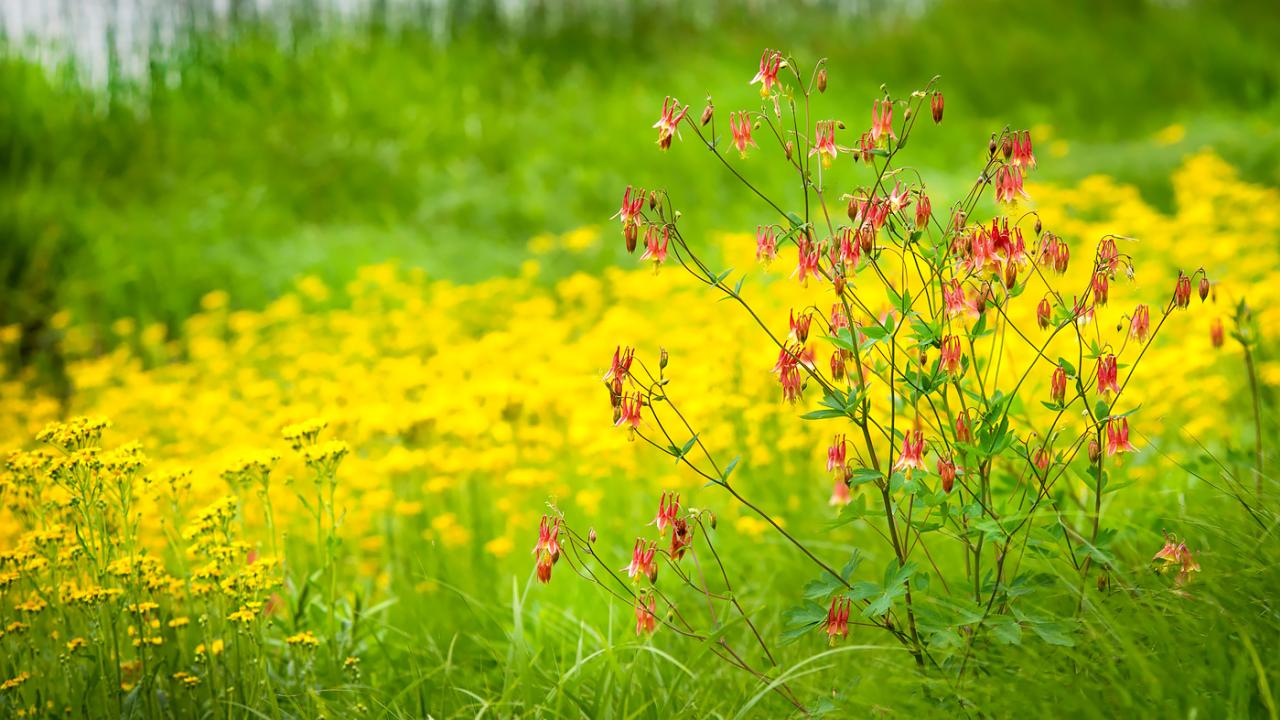

Plant Science & Conservation
Garden Stories

The Secret Life of the Garden’s Lakes
Like everyone else, I love to watch spring unfold in gardens everywhere—but at the Chicago Botanic Garden, my heart is in the water.
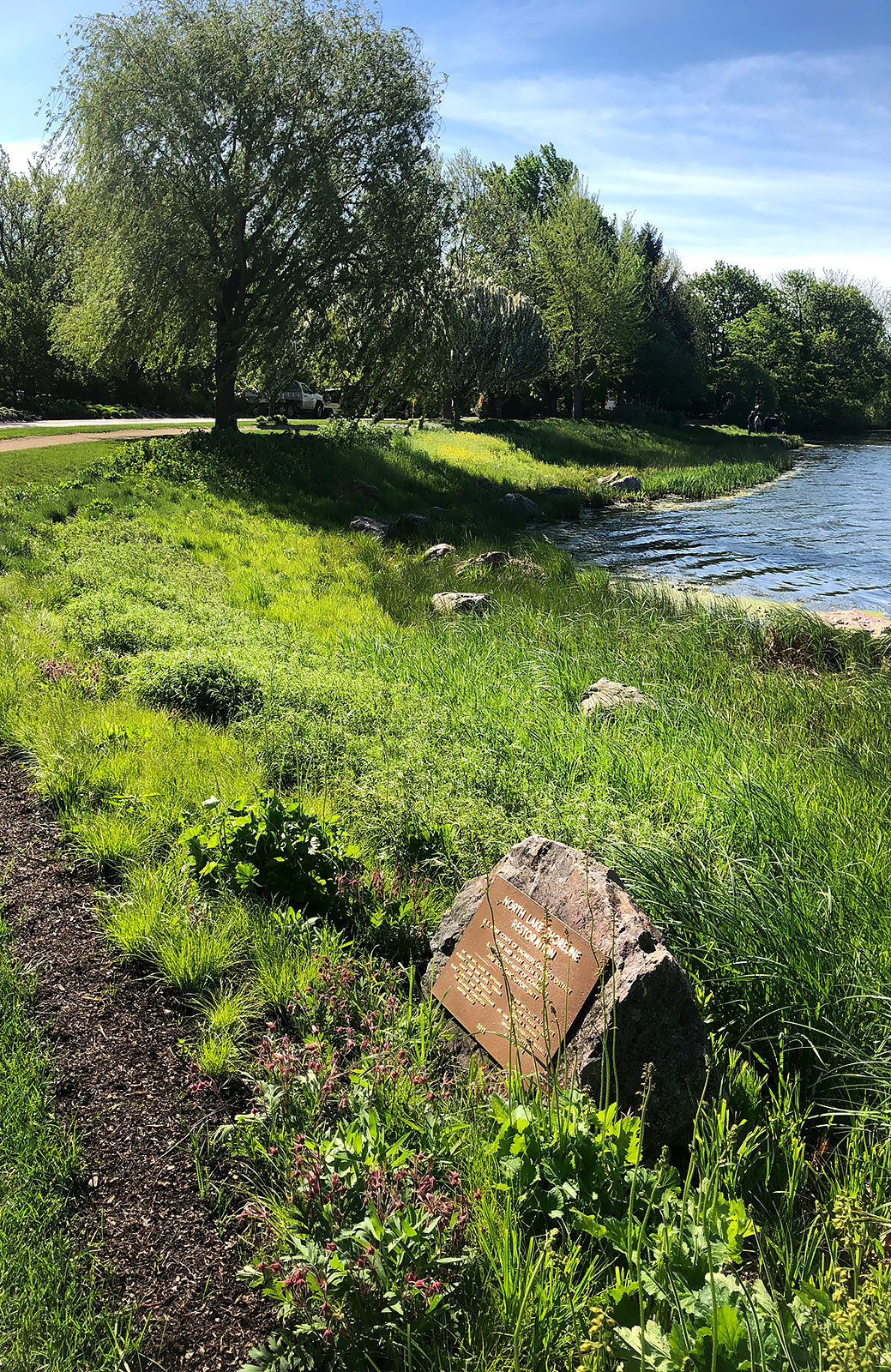
As the Woman’s Board Curator of Aquatics, I like to point out the signs of spring, in and around the 60 acres of Garden lakes and 6 miles of shoreline. People enjoy the serenity of the water, but there’s also sounds, color, and motion, if you know where to look.
Let’s start when you enter the Garden from the Lake Cook Road entrance. On the right, you’ll see the North Lake, one of our most recent shoreline restoration projects that was completed in 2012. The restored shoreline provides an enhanced habitat for our aquatic life, which includes wood ducks, double-crested cormorants, and snapping turtles, along with bullfrogs, American toads, and other members of their croaking chorus.
Near the North Lake plaque, you might spot a short, curious-looking purple flower. The Budburst plant app would tell you that the plant is a prairie wildflower known as prairie smoke (Geum triflorum)—the flower really does look like smoke leaving a bonfire.
If you look farther downslope, you might see another short flower, this one vibrant yellow. This plant is marsh marigold (Caltha palustris) and should not be confused with the insidious invader lesser celandine (Ficaria verna), a species that we are actively managing as it quickly spreads in our region.
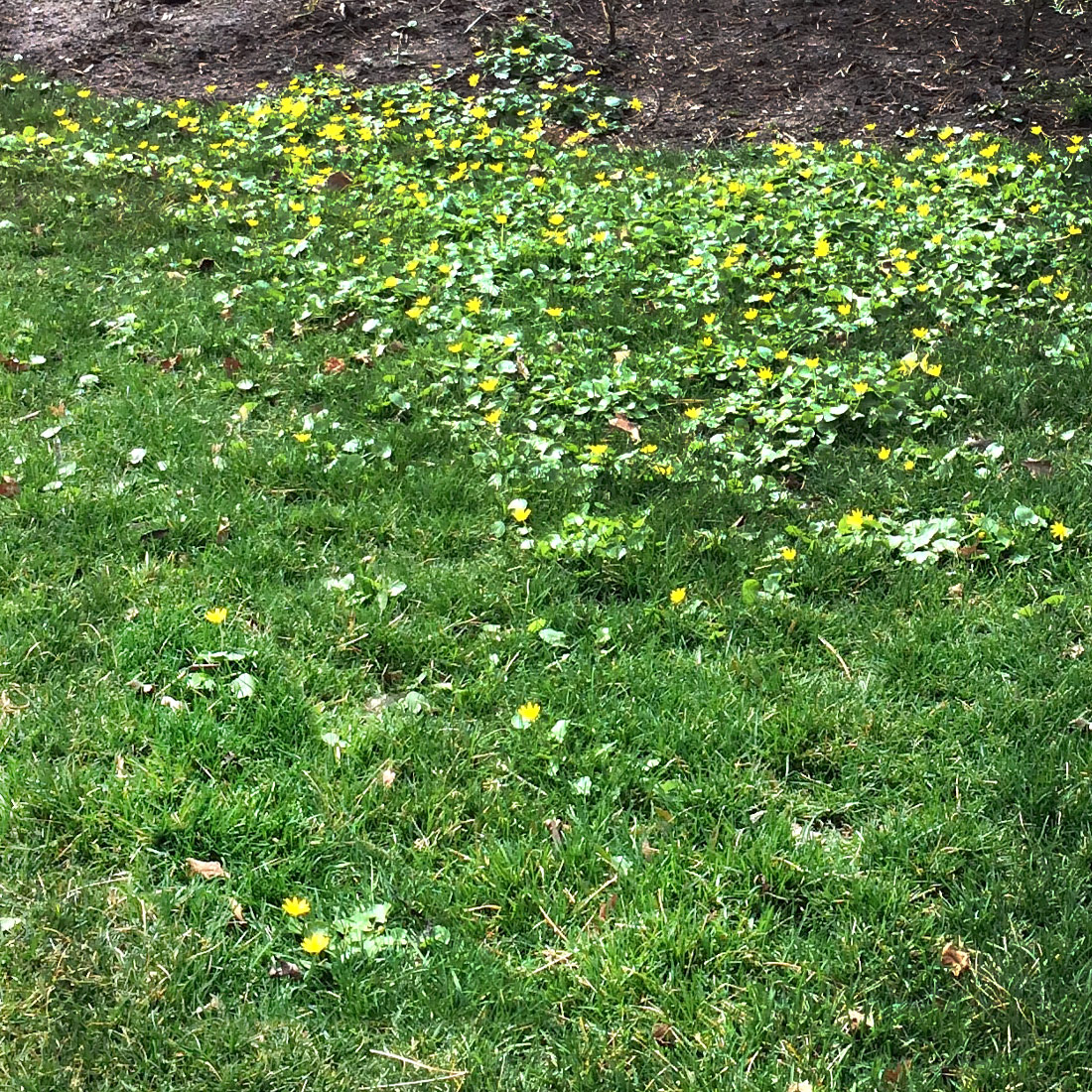
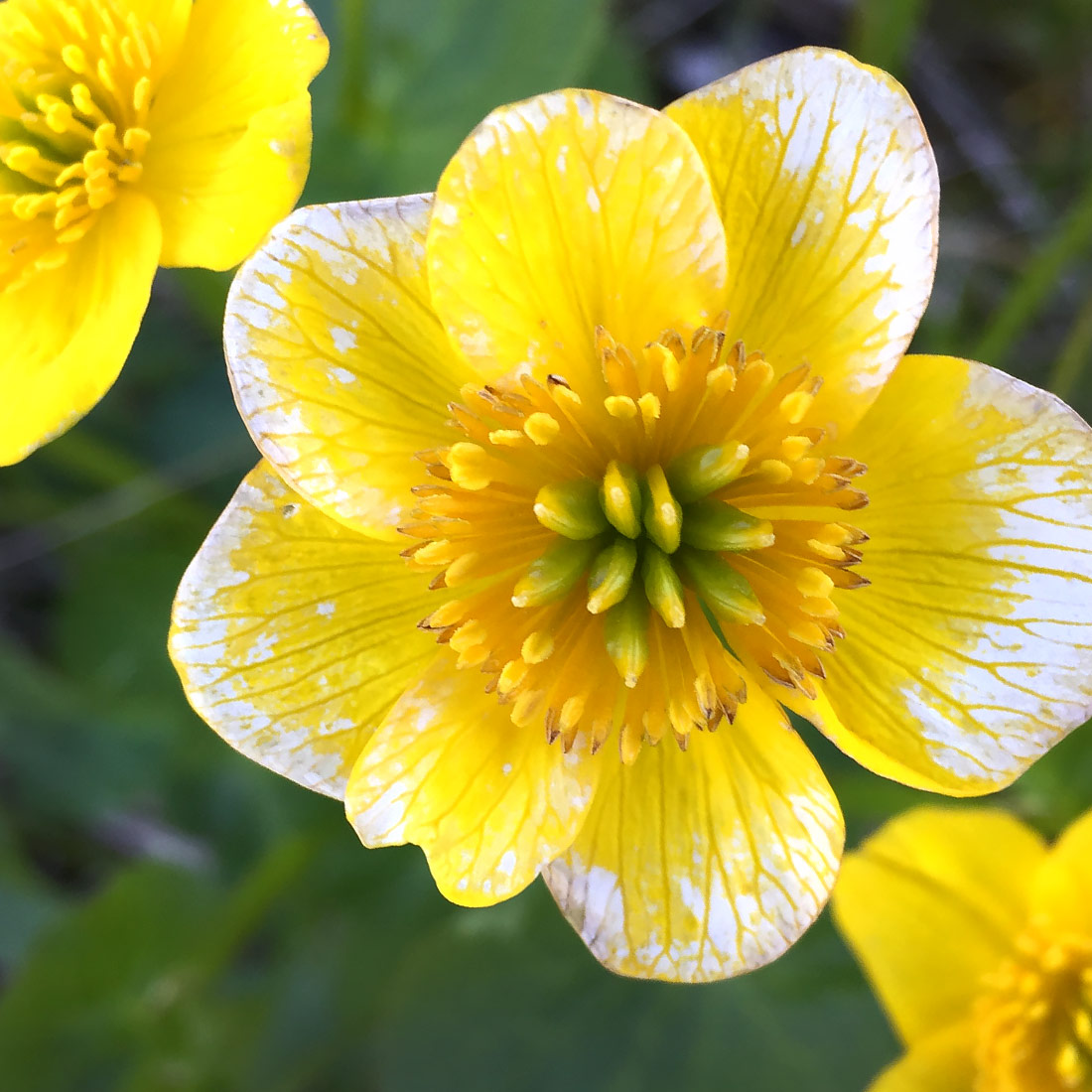
Walk farther south along the east road and look toward the islands of the Malott Japanese Garden. You might see some algae in the water—a vibrant-green, cool-season algae known as water silk (Spirogyra). Spirogyra gets its name from its spiraled chloroplasts, the part of plant cells where photosynthesis takes place. Algae is important to the ecological balance of our waters and a food source for fish and other aquatic animals.
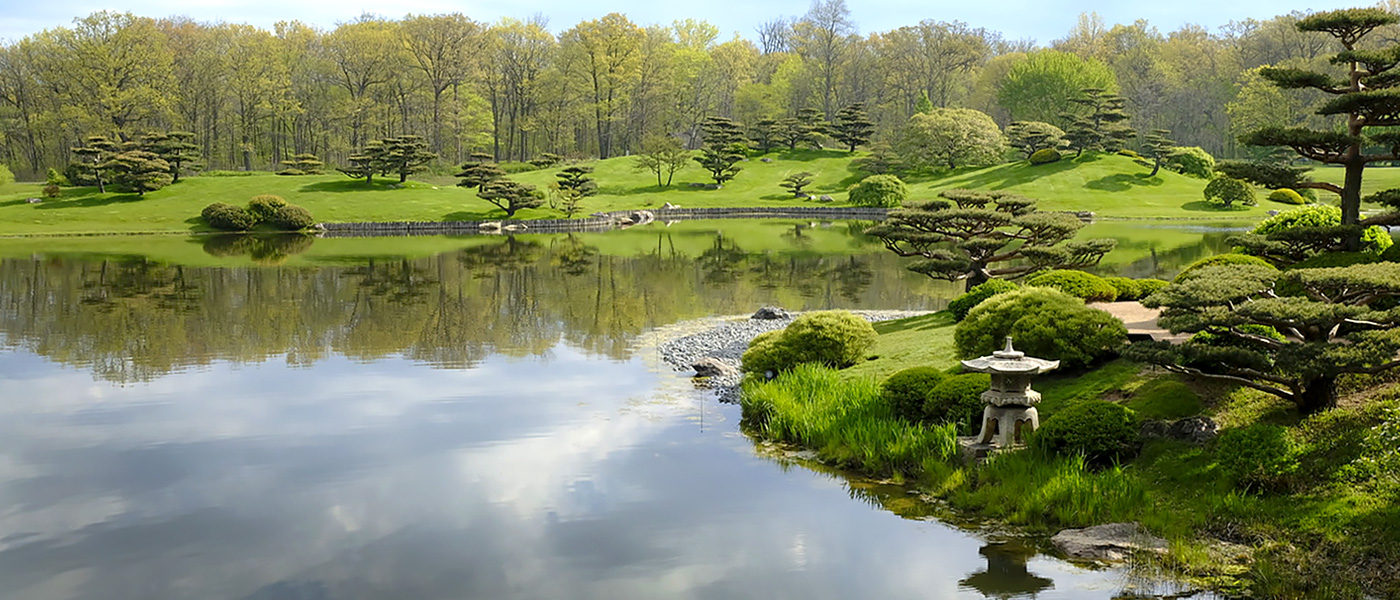
And what’s that plant that’s breaking, or about to break, the water’s surface? It’s curly leaf pondweed (Potamogeton crispus), the first invasive macrophyte—or aquatic plant— of the season. You might see our aquatic weed harvester motoring down the water; it “mows” weeds down to prevent it from choking the lake. The harvester also keeps weeds from breaching the surface of water and making a mess.
Heading to the south end of the Garden toward the Shida Evaluation Garden, looking west, you’ll see a shoreline that was completed in fall 2021. There’s a good amount of bare soil between the plants, but it’s oddly satisfying because you can easily see each individual young plant. You again might spot marsh marigold, along with another short plant with a lavender bloom—woodland phlox (Phlox divaricata). It’s nice to see a woodland species on a shoreline. Since the plant is upslope and under a tree, it doesn't receive too much moisture or sun, and provides a beautiful show in spring.
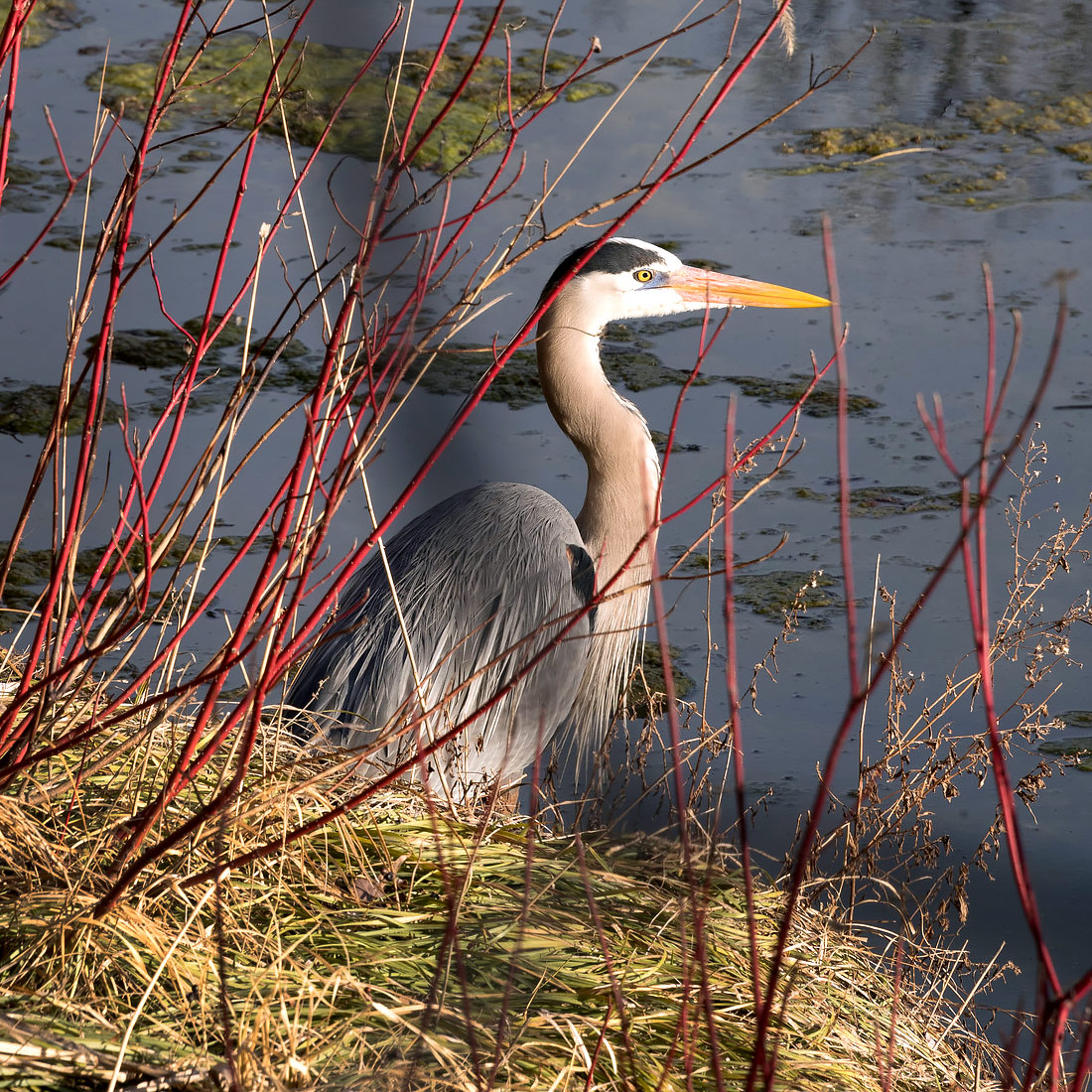
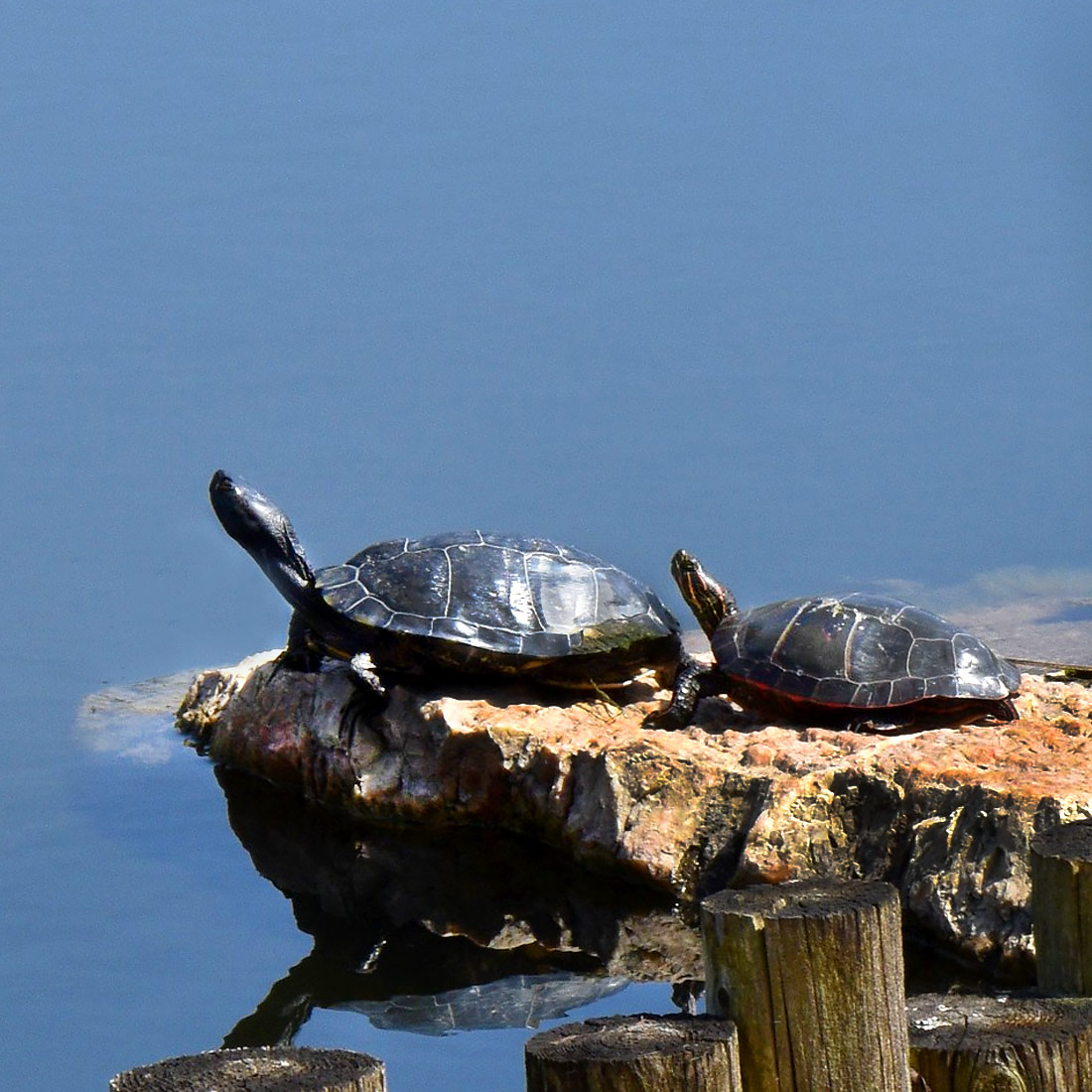
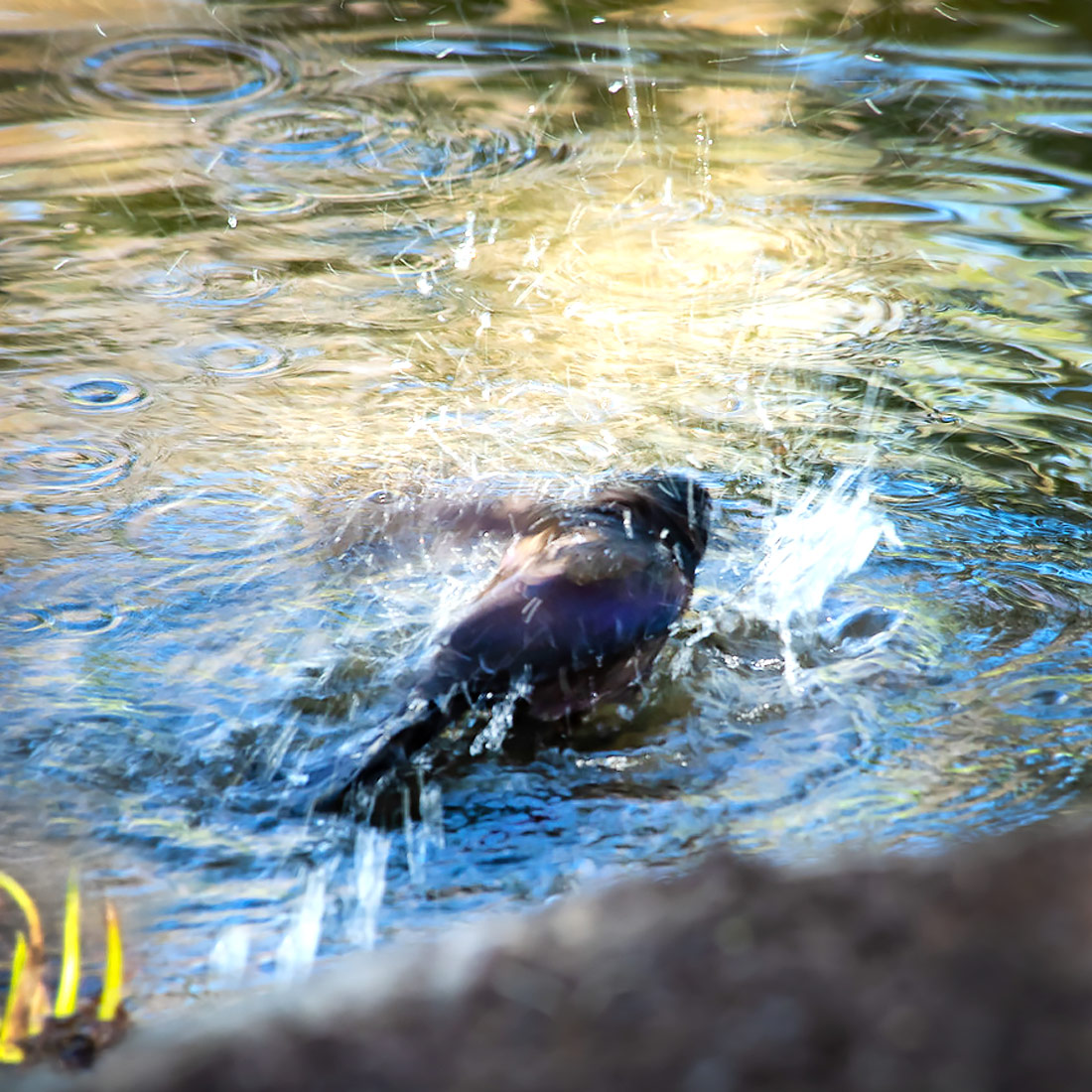
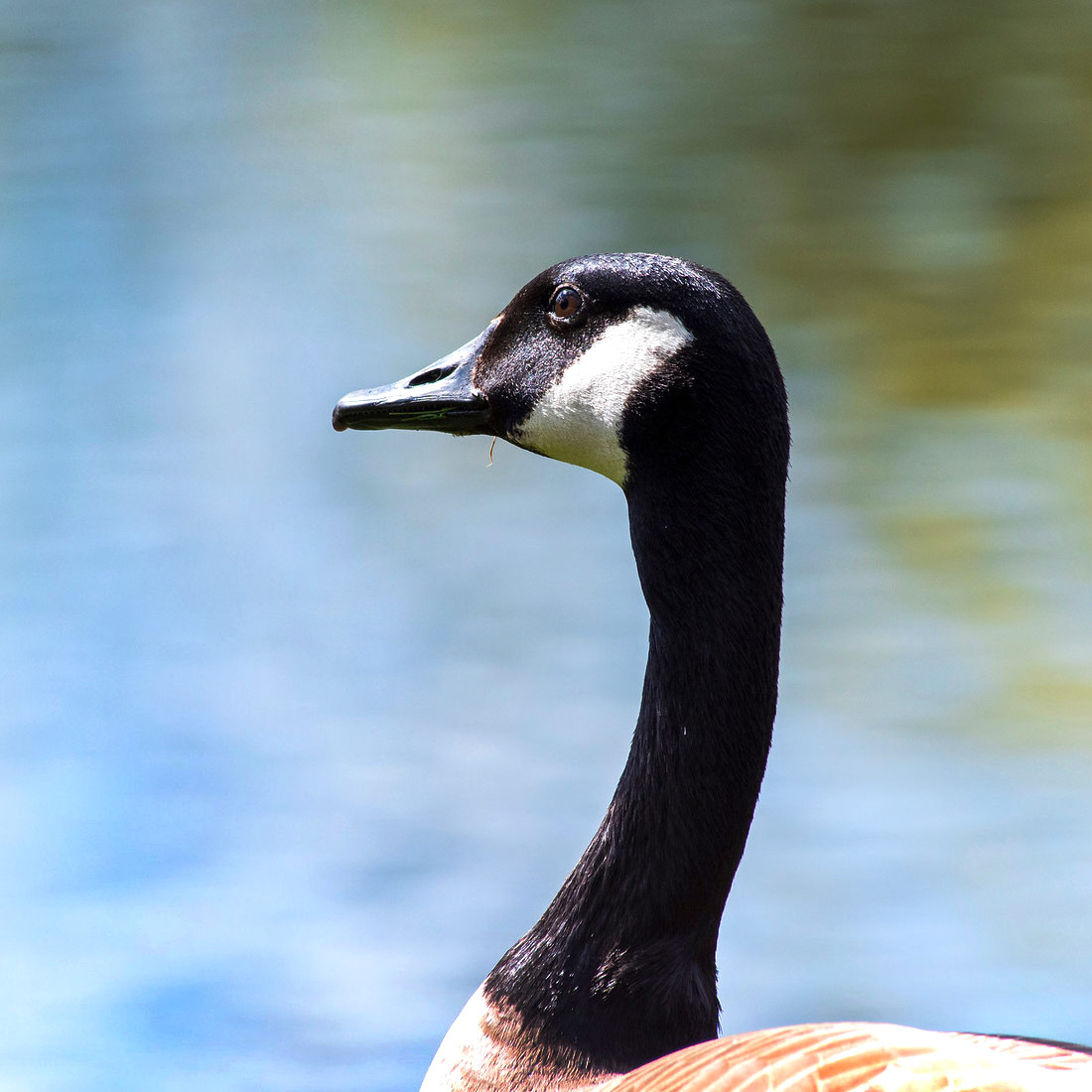
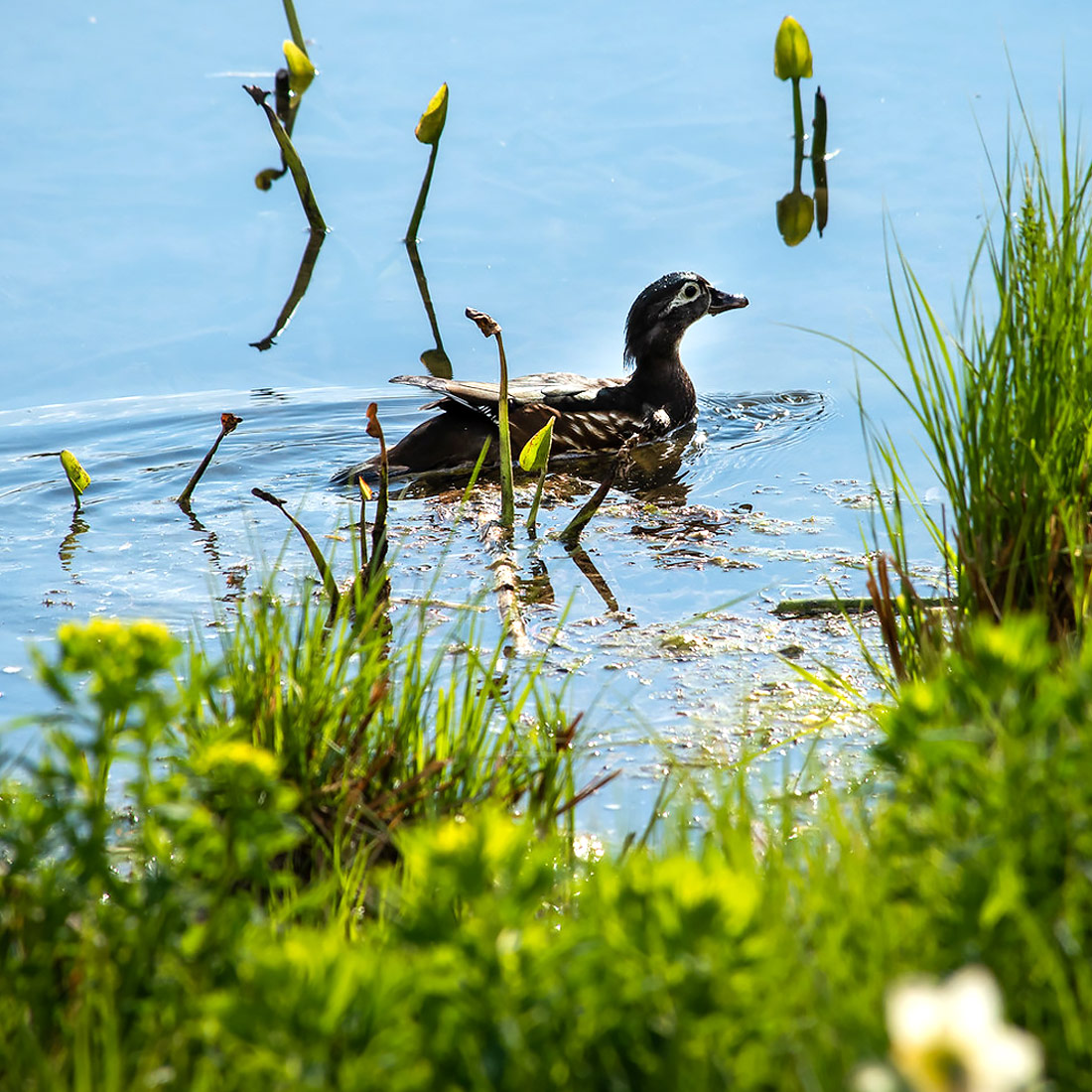
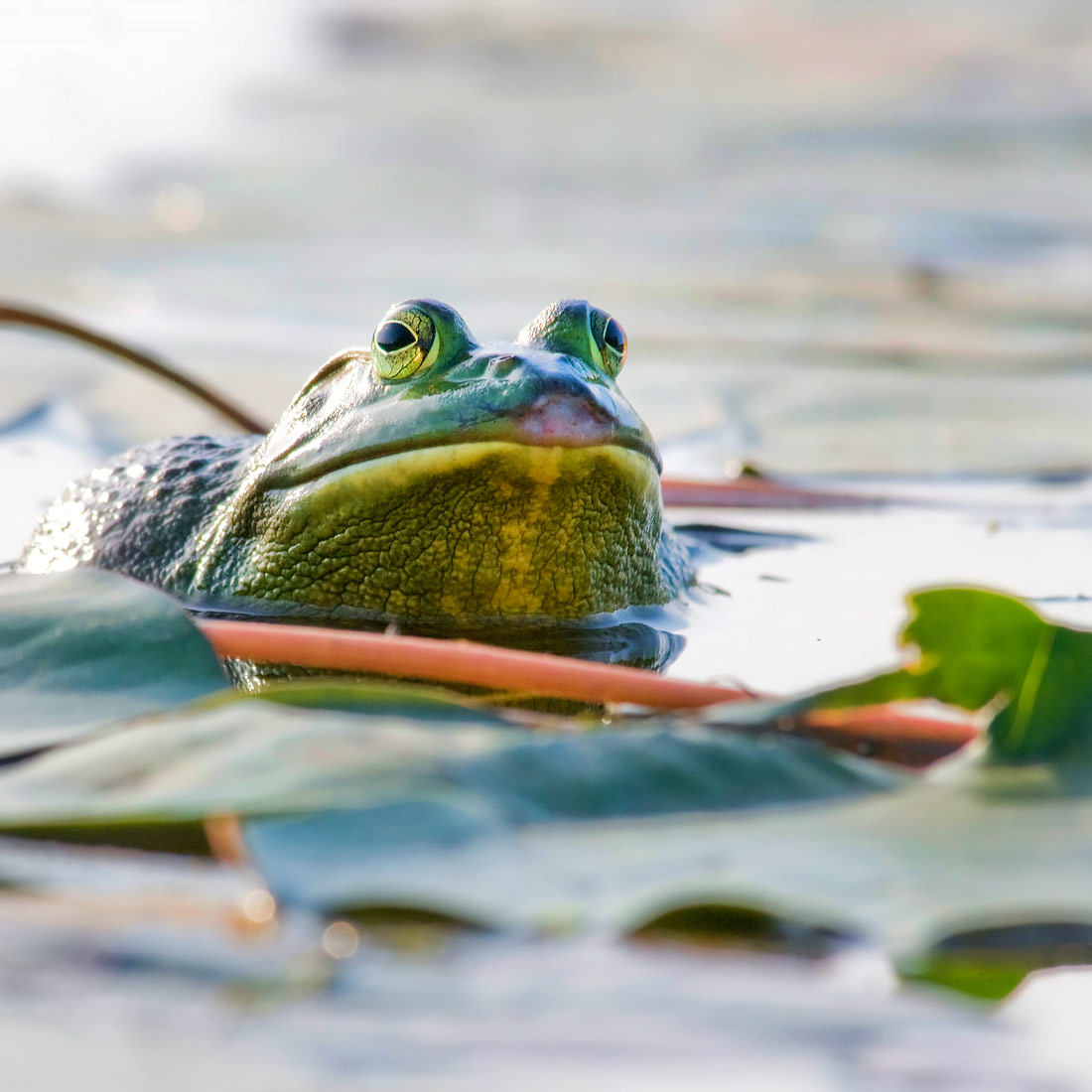
If you keep walking south, turn west at the south weir; this is one of the weirs that separates us from the Skokie River. You might hear a lot of commotion on a mudflat and spot waterfowl on a pit stop during their migration—buffleheads, red-breasted mergansers (known as “diving ducks,”), coots with their goofy feet, and, my goodness, even some northern shovelers.
On your route back, you might notice wood ducks at Spider Island, carp in the water, and maybe even a great blue heron with a small bluegill in its mouth. You’ll also find sweeps of native plants along the water’s edge, including blue joint grass, and in the summer aquatic insects like dragonflies and damselfly nymphs.
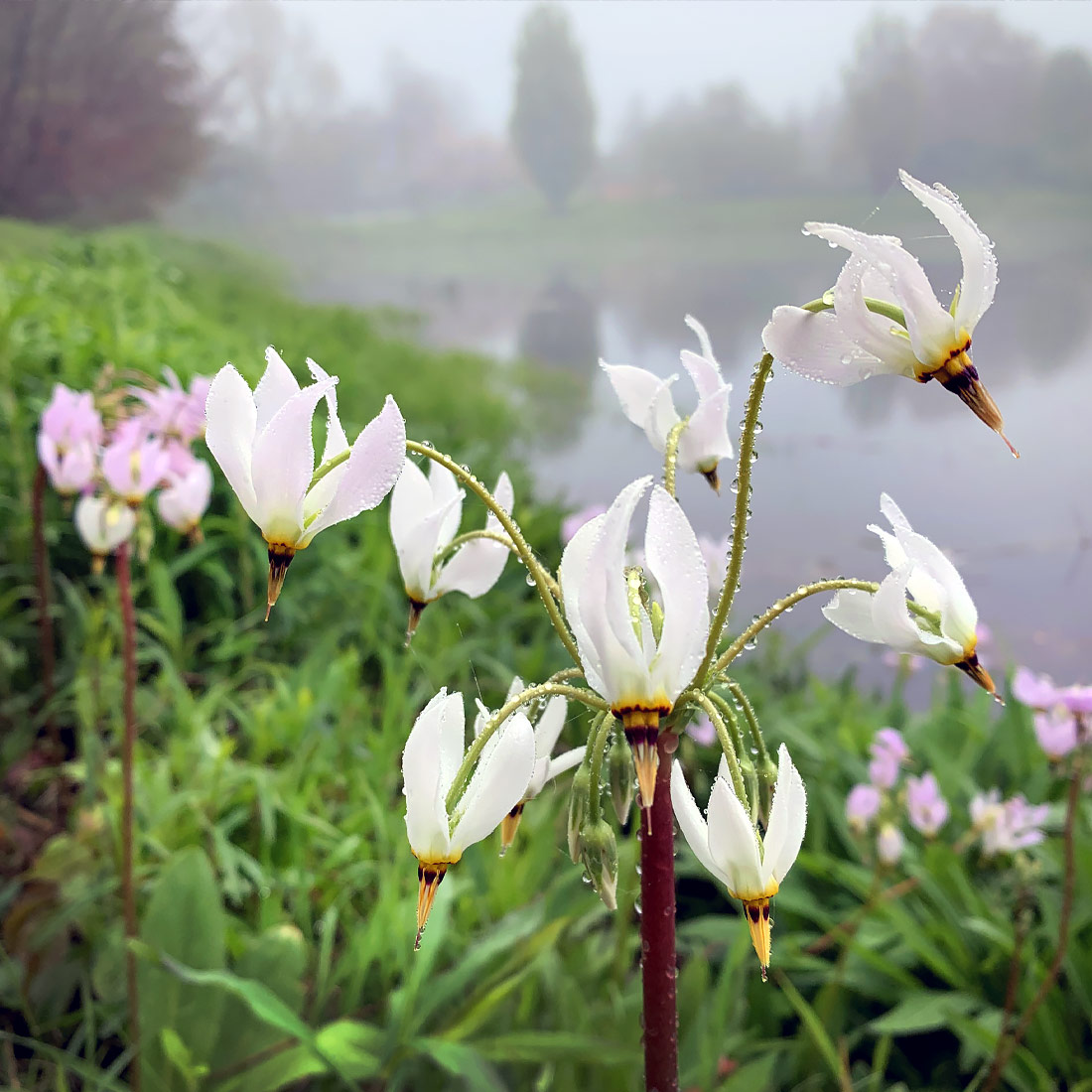
So this spring, I hope you enjoy the blooms in our 28 gardens and take the time to soak up the glories of spring around the shorelines. I’d love it if you look at the water with fresh eyes; you’ll find it full of life and sights to behold.

